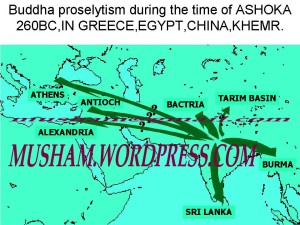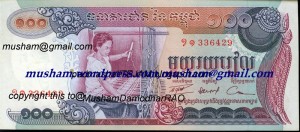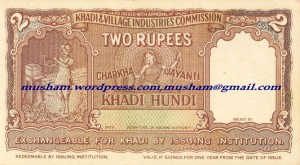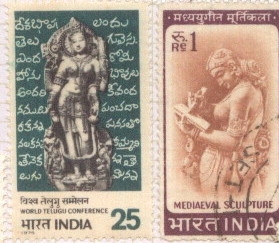Mythology of weaving,history of KHADI BOARD,banknotes,QUEEN with spindle,
By musham damodhar rao
The theme of weaving in mythology is ancient, and its lost mythic lore probably accompanied the early spread of this art. Westward of Central Asia and the Iranian plateau, weaving is a mystery within woman’s sphere, and where men have become the primary weavers in this part of the world, it is possible that they have usurped the archaic role.
Weaving begins with spinning. Until the spinning wheel was invented in the 14th century, all spinning was done with distaff and spindle. In English the “distaff side” indicates relatives through one’s mother, and thereby denotes a woman’s role in the household economy
Egypt
In pre-Dynastic Egypt, was already the goddess of weaving (and a mighty aid in war as well). She protected the Red Crown of Lower Egypt before the two kingdoms were merged, and in Dynastic times she was known as the most ancient one, to whom the other gods went for wisdom. Nit is identifiable by her emblems and most often it is the loom’s shuttle, with its two recognizable hooks at each end, upon her head. According to The Gods of the Egyptians the root of the word for weaving and also for being are the same
Many of the world’s people understand that the world is woven and that a weaving Creator wove its designs into being
Ancient Romans regarded the processes of spinning and weaving with superstitious awe. In many parts of the Roman empire, laws banned women from holding a spindle in public: should anyone lay eyes on such a woman, it could mean exceptionally bad luck, perhaps even the failure of the harvest.
The concept of weaving actually relates to mythology much more than simply appearing in myths, the English word text is derived from the Latin word for weaving, texare, explaining the source of terms like “weaving a story”.
In Baltic myth, She is the life-affirming sun goddess, whose numinous presence is signed by a wheel or a rosette. She spins the sunbeams. The Baltic connection between the sun and spinning is as old as spindles of the sun-stone, amber, that have been uncovered in burial mounds. Baltic legends as told have absorbed many images from Christianity and Greek myth that are not easy to disentangle.
In China, the weaving goddess floated down on a shaft of moonlight with her two attendants, showed to the upright court official in his garden that a goddess’s robe is seamless for it is woven without the use of needle and thread, entirely on the loom. The phrase “a goddess’s robe is seamless” passed into an idiom to express perfect workmanship. This idiom is also used to mean a perfect thing.
A royal portrait employing strong mythic overtones: born a German princess, adopts the national costume , with distaff and spindle.
ROYAL QUEENS”S costume with distaff and spindle.
Philately, Numismatics,Epigraphy,Ancient Science,Pyretics,Metallurgy,Astronomy,Vaastu,Mathematics,geography,Mythology,ancient coins, gods,Telugu cinema,HISTORY OF Playing Cards. Stamps. Coins, Currency notes ,HISTORY OF BANKING ,Rulers,India,Sciences,vedic literature,echo sound,Forts,Hyderabad.BHUDDHISM,SOUTH INDIA,satavahana,Coins of BHUDDHA,Banking,BANK OF BENGAL,TEMPLES,ANDHRA,WONDERS, radio DXING collect QSLcards,history of handloom textiles,Islamic science from QURAN and others texts of 10 Century AD onwards,piri REIS map of 1300Ad
coins,postalhistory,banknotes,alexander,bible,Quran,hindu,moghul,mythology,ancientscience,speedoflight,gods,sultanate,indiastocknote1891,bombay,bengal,farmans,kingsalaryreciepts,ancientcoins,Handlooms,weavers,handloomexport,
coins,stamps,banknotes,hindu,moghul,mythology,ancientscience,speedoflight,gods,sultanate,indiastocknote1891,bombay,bengal,farmans,Handlooms,weavers,handloomexport,
$$$$$$$$$$$$$$$$$$$$$$$$$$$$$$$$$$$$$$$$$$$$$$$$$$$$$$$$$$$44
IN Nagpur session (1920) that the Indian National Congress decided to encourage “Khadi”. The first Khadi Production Centre was established at Katiawad, Gujarat, Mahatma Gandhi used to refer to Khadi as “The delilivery of freedom”.
In fact, Khadi was introduced in 1920 as a political weapon and as the best instrument for giving concrete expression to the Swadeshi Spirit to boycott foreign goods. Khadi rendered an opportunity to every man, woman and child to cultivate self-discipline and self-sacrifice as a part of the non-cooperation movement.
Development of All India Board under the Indian National Congress by Gandhiji.
1923 Given below is a chronology of events that contributed to the development of Khadi in India over time in 1923
1925 Setting up of All India Spinners Association (AISA) / Akhil Bharat Charkha Sangh,
1935 All India Village Industries Association (AIVIA) was formed.
1946 Govt. of Madras sought the advice of Gandhiji and set up a Department for Khadi.
1948 Govt. of India recognized the role of Rural Cottage Industries in the Industrial Policy Resolution, 1948. Constituent Assembly included Cottage Industries in Rural Areas among the directive Principles of the Constitution in Article 43.
These ideas were elaborated in the First five-year Plan, which laid down the Policy framework for setting up of a body for Khadi and Village Industries. Central Govt. also recommended for setting up of a Board.
1953 In accordance with these recommendations, Govt. of India set up All India Khadi & Village Industries Board in January, 1953. (AIKVIB)
1955 It was decided that a statutory body should replace the Board.
1956 Khadi and Village Industries Commission Act 1956 was passed.
1957 Khadi and Village Industries Commission came into being.
The post independence period saw the Government of India and the planning commission assuring the responsibility of fitting Khadi and Village Industries within the framework of five-year plans
Here are photos pf some interesting banknotes issued by the THE VILLAGE AND GRAMAUDYOG commision or other name with a variatin
8:03 AM | Permalink | click to add a comment
Powered by Google From sampa

weavers around the world,WEAVERS QUEEN
WebThis Site
Copyright © 2009 musham damodhar rao. All rights reserved. Subscribe to this Site












